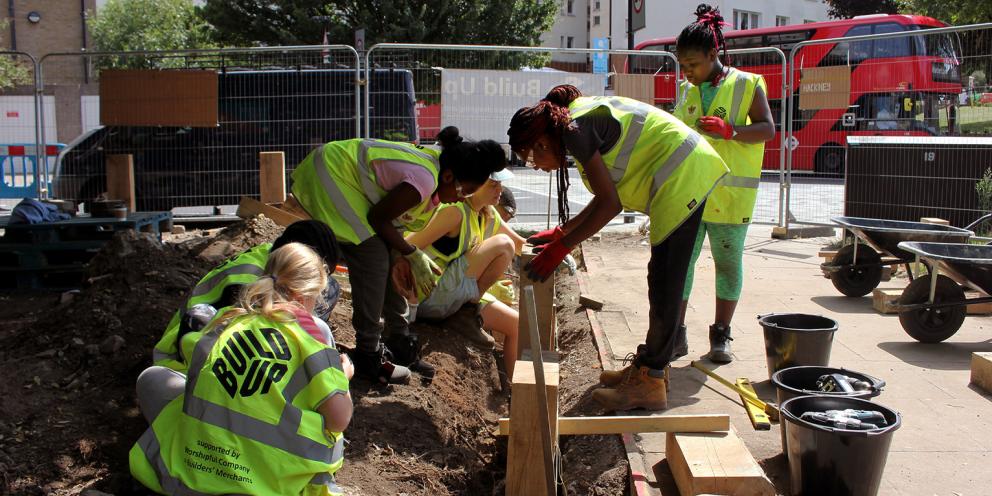Post
#Change: Improving London’s community spaces post-pandemic
5 Aug 2021
The London Society aims to provide a platform for the debate on how London ought to develop, and to go with our theme of ‘change’ in 2021, we will have a strand of articles on the blog called “Change: Opinions” – polemical pieces that make a case for a radically changing some aspect of the status quo or of received wisdom.
Laura Porter sets out a vision for how bottom up community development will create spaces that are functional, accessible and well suited to the needs of the community. If you have a piece that you would like to submit, please email blog@londonsociety.org.uk
In 1971 the renowned urban planner Jan Gehl authored the book Life Between Buildings outlining the principle that people are the most important priority to public space. Gehl’s Methodology has been instrumented in his home city of Copenhagen and over a 40-year period, it has transformed from a car-dependent city to a pedestrian-focused one. Unsurprisingly Denmark’s capital now ranks as one of the most liveable cities in the world.
Couped up in our homes for much of the last year, not a whole lot of ‘life’ has been able to exist between buildings. With restrictions now winding down, how do we best move forward with a renewed sense that public spaces are pertinent to the wellbeing of ourselves, our communities and London itself? The pandemic has affected us all but some more than others; one study co-led by City University of London and UCL researchers found that many of those with mental health conditions predating the pandemic experienced a worsening of their condition due to the impacts of lockdown. The same study’s findings show people from black, Asian and ethnic minority (BAME) communities were particularly affected.
Studies have shown that nature and green spaces are beneficial to well-being and that living in an urban area with more green space can lower mental distress. Without seeing the data, most would agree with these benefits and the importance of publicly accessible, green, open spaces near urban areas. In London more than a fifth of homes have no access to a private or shared garden - this is partially offset in the capital by the provision of parks within walking distance of most homes, but there are significant disparities in terms of the quality of these parks.
Given the disproportionate impact COVID-19 has had on different communities, going forward, how will access to public spaces be offered in an equitable way? How does safety become integrated into the design of a space? It's important that the members of each community are consulted as they have the most insight into their real needs. One initiative that is proving this is BLooM - Connecting with Nature, which seeks to encourage black and other people of colour to feel more welcome in local green spaces. Started through a crowdfunding campaign after a series of successful online events, the project is one of the 39 Make London projects that gained the backing of the Mayor of London in March 2021.
At a governmental level, top-down policy changes have hastened the implementation of positive urban interventions. One example of this is Transport for London’s 'London's Streetscape' programme which has been initiating changes to the urban realm in order to facilitate social distancing. Under the programme, several London Boroughs have seen the extension of pavements and the implementation of cycle lanes. As much as we have digital means of connection integrated into our lives it is clear that communities need to be connected in physical space. The emphasis on supporting the community to make their own projects and recreate spaces that work for them places priority on people, much like Jan Gehl’s methods. However, unlike Gehl’s initiatives, they are first and foremost initiatives that are community-driven, which will be the best way to design and implement changes to the urban realm.
Laura Porter is a writer and Masters of Architecture graduate from the University of Dundee, passionate about architecture and the built environment’s responsibility to instrument positive change.
